Firstly, I searched (a lot) and I'm confused about my Android architecture.
The main ways that I used are:
- The
uname -mcommand says that I'm usingarmv8l. - The
dpkg --print-architecturecommand says that I'm usingarm - The
lscpushows this output:
~ $ lscpu
Architecture: armv8l
Byte Order: Little Endian
CPU(s): 8
On-line CPU(s) list: 0-3
Off-line CPU(s) list: 4-7
Vendor ID: ARM
Model name: Cortex-A53 Model: 4
Thread(s) per core: 1
Core(s) per socket: 4
Socket(s): 1
Stepping: r0p4
CPU(s) scaling MHz: 79%
CPU max MHz: 1586.0000
CPU min MHz: 0.0000
Flags: half thumb fastmult vfp edsp neon vfpv3 tls vfpv4 id iva idivt lpae evtstrm aes pmull sha1 sha2 crc32
- The
cat /proc/cpuinfoshows this output:
~ $ cat /proc/cpuinfo
processor : 0
Features : half thumb fastmult vfp edsp neon vfpv3 tls vfpv4 idiva idivt lpae evtstrm aes pmull sha1 sha2 crc32
CPU implementer : 0x41
CPU architecture: 8
CPU variant : 0x0
CPU part : 0xd03 CPU revision : 4
processor : 1
Features : half thumb fastmult vfp edsp neon vfpv3 tls vfpv4 idiva idivt lpae evtstrm aes pmull sha1 sha2 crc32
CPU implementer : 0x41
CPU architecture: 8
CPU variant : 0x0
CPU part : 0xd03 CPU revision : 4
processor : 2
Features : half thumb fastmult vfp edsp neon vfpv3 tls vfpv4 idiva idivt lpae evtstrm aes pmull sha1 sha2 crc32
CPU implementer : 0x41
CPU architecture: 8
CPU variant : 0x0
CPU part : 0xd03
CPU revision : 4
processor : 3
Features : half thumb fastmult vfp edsp neon vfpv3 tls vfpv4 idiva idivt lpae evtstrm aes pmull sha1 sha2 crc32
CPU implementer : 0x41
CPU architecture: 8
CPU variant : 0x0
CPU part : 0xd03
CPU revision : 4
- AIDA64 (Device info app) shows me in the CPU section:
And lscpu says that I'm using Cortex-A53 model, and according to Cortex-A53 it's says that I'm using ARMv8-A 64-bit.
So, I don't know exactly what my Android arch is, like when I install node.js or other packages or binary files, do I install it in armv7l or armv8 (arm64) from node.js dist?
And I know installing node.js manually in Android is not really supported, or I don't know how to do it.
If anyone has a question, I'm ready for answering.
Thanks for all.
